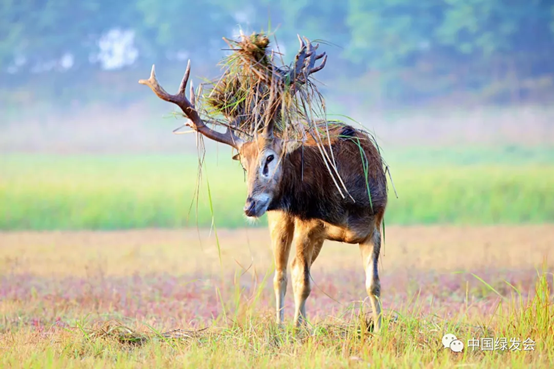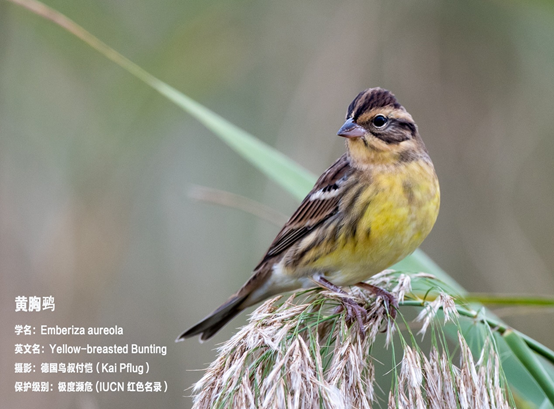On June 19, 2020, the National Forestry and Grassland Administration and the Ministry of Agriculture and Rural Affairs jointly issued a notice to publicly solicit opinions on the List of National Key Protected Wild Animals.
According to media statistics, the List of National Key Protected Wild Animals plans to add or upgrade about 400 species of protection. This is also the first large-scale adjustment of the list since its implementation in 1989.
The following is an explanation of the List of National Key Protected Wild Animals (Draft for Comment) attached to the "Notice"
Explanation on the List of National Key Protected Wild Animals (Draft for Comment)
According to the relevant provisions of the "Wildlife Protection Law of the People's Republic of China", the National Forestry and Grassland Administration and the Ministry of Agriculture and Rural Affairs (hereinafter referred to as "the two departments") organized the adjustment of the "List of National Key Protected Wild Animals (Draft for Comment)" (hereinafter referred to as "List"), the relevant situation is now explained as follows.
I. Basis for adjustment
Articles 7 and 10 of the Wildlife Protection Law stipulate that the competent forestry grassland and fishery departments of the State Council shall be responsible for the protection of terrestrial and aquatic wildlife across the country. The state implements classified protection for wild animals. The state implements key protection for precious and endangered wild animals. The wildlife under special state protection is divided into first-level protected wild animals and second-level protected wild animals. The list of national key protected wild animals shall be formulated by the department of wildlife protection under the State Council after organizing a scientific assessment, and the list shall be adjusted according to the assessment. The list of national key protected wild animals shall be reported to the State Council for approval and publication.
According to the changes of wild resources and the latest research results, timely adjustment and revision of the "List" is conducive to rescue precious and endangered wildlife, maintain biodiversity and ecological balance, and promote the construction of ecological civilization.
II. The adjustment process
Since the implementation of the newly amended "Wildlife Protection Law" on January 1, 2017, the two departments have accelerated the adjustment of the "List". After the reform of the national administrative agency in September 2018, based on the original work, the two departments conducted research on the cross-management of sika deer and red deer in the "List" and "Catalogue of Chinese Livestock and Poultry Genetic Resources". In January 2019, relevant experts and scholars from Chinese Academy of Sciences and other research institutes were organized to conduct scientific argumentation and research, and the revised draft of the List was formed. Subsequently, the two departments respectively solicited opinions from the people's governments of 31 provinces (autonomous regions and municipalities) and the relevant departments of the Xinjiang Production and Construction Corps, and held a special symposium to listen to the opinions of experts and scholars from relevant scientific research institutes, colleges and universities, and industry. Continue to revise and improve and form a draft for solicitation of the "List".
III. The adjustment principle
1 The principle of endangerment. Taking the Chinese Vertebrate Red List as an important reference for the evaluation level of the country's vertebrates and the classification and standards of the IUCN Red List, including factors such as population structure, quantity and habitat area, range, quality and rate of change, focus on the “endangered” species with wild populations that are endangered, the distribution area is narrow, the number of “endangered” species and wild populations in the wild population is declining obviously or continuously, "vulnerable" species whose survival is seriously threatened. For example, Sterna bernsteini, Spoon-billed Sandpiper, Yangtze finless porpoise, etc. are listed as critically endangered species by the IUCN Red List. This adjustment is considered to be upgraded or newly added as a national first-level protected species.
2 The principle of preciousness. Focus on the important role of maintaining the structure and function of the ecosystem, at the same time, due to habitat destruction, hunting and trade development and utilization activities, the survival of species that are greatly threatened, for example, raptors are at the top of the food chain and play a role in regulating the population of species in the lower food chain, which is very important for maintaining ecosystem functions, the international trade behavior of raptors is not uncommon. Therefore, all species of raptors (Accipitriformes 55 species, Falconiformes 12 species and Strigiformes 32 species) are included in the protection list, and important species are listed as first-level protection. The Coreius septentrionalis of the Yellow River is an important aquatic living resource in China. It is traditionally of high fishery economic value and is affected by habitat destruction, its natural population is already extremely endangered, and it is listed as a first-level protection in this list.
3 The principle of similarity. Although some species in taxa such as Platysternidae, Testudinidae, alligatoridae, Sinocyclocheilus, etc., do not fully meet the scientific standards for protection by listing, however, considering that in the process of law enforcement and supervision, it cannot be effectively distinguished from the species of the same family or genus included in the list, so it is also included in the scope of protection in this list adjustment.
4 The precautionary principle. For Malayan pangolins and Indian Pangolin, there is no definitive evidence to prove that there are hotspot sensitive and endangered species naturally distributed in China, as well as species such as Mustang, Milu deer and saiga antelope that have a record of natural distribution in the wild in Chinese history, considering that if new scientific discoveries identify species that belong to China’s natural distribution, and that wild species can be re-established and restored through ecological restoration measures, therefore, this species is included in the protection scope.
5 The compatibility principle. For Trimeresurus mangshanensis, Hynobius amjiensis, Whale shark and other species that have a natural distribution in China and have been included in the CITES appendix, overall consideration of domestic protection and implementation of the management needs of international conventions, in this adjustment of the directory, it will also be given special consideration according to the actual situation and protection needs.
6 The principle of attention. Although the scientific standards for inclusion have not yet been fully met, species that have attracted widespread social attention due to the continuous increase in development and utilization intensity or the reduction of habitats have also been actively considered for inclusion in this adjustment; Conversely, although it meets the scientific criteria for inclusion, the social concern is extremely low, once species are included that may increase the risk of illegal hunting and trade, they are not considered for inclusion. For example, Yellow-breasted Bunting occupies a large share in the bird trade, due to the wrong promotion of its medicinal effects, Yellow-breasted Bunting in the wild has been over-hunted, resulting in a significant decline in the number of wild populations, causing widespread international community concerns, this adjustment considers adding it as national first-level protection.
IV. Other situations that need explanation
This "List" only lists wild animals that are naturally distributed in China or have a record of natural distribution and are native to China, excluding wild animals that are native to overseas.


(Photo credit: CBCGDF volunteer Zhu Xi)

(Photo credit: Li Dongming)

(Photo credit: Kai Pflug)
Reference articles:
https://mp.weixin.qq.com/s/iyUK6k-nLnX5ceTP8FZTuQ
https://m.bjnews.com.cn/detail/159254902915812.html
By / Maggie
